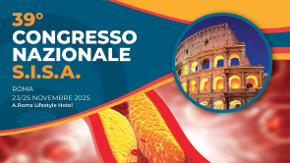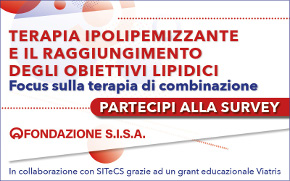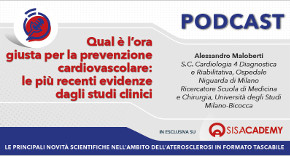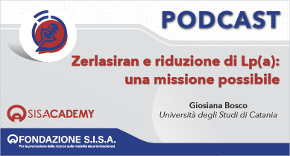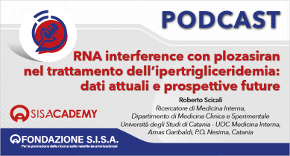 Rivista in lingua italiana
Rivista in lingua italiana
riservata ai Soci SISA
Ultimo numero:
Anno 16 • N.1/2025
SISANews
Canakinumab non è costo-efficace nella prevenzione di eventi cardiovascolari ricorrenti
Recentemente, il trial CANTOS (Canakinumab anti-infiammatorio Trombosi Outcome Study) ha fornito evidenze del fatto che una terapia mirata contro l'infiammazione può ridurre gli eventi cardiovascolari. Nel trial, pazienti con precedente infarto miocardico e livelli di proteina C-reattiva di almeno 2 mg/L trattati con canakinumab 150 mg ogni 3 mesi avevano un rischio inferiore del 15% dell'esito primario (composito di infarto miocardico non fatale, ictus non fatale o morte cardiovascolare) rispetto al placebo, effetto guidato principalmente da minori rischi di infarto miocardico ricorrente. In questa analisi di costo-efficacia, sono stati simulati i risultati di pazienti trattati con canakinumab in aggiunta allo standard di cura versus lo standard di cura da solo. Si e' così stimato un rapporto di costo-efficacia incrementale di $6,4 milioni per QALY guadagnato, evidenziando come canakinumab non sia costo-efficace ai prezzi correnti negli Stati Uniti per la prevenzione di eventi cardiovascolari ricorrenti.
![]()
Cost-effectiveness of Canakinumab for Prevention of Recurrent Cardiovascular Events
Sehested TSG, Bjerre J, Ku S, Chang A, Jahansouz A, Owens DK, Hlatky MA, Goldhaber-Fiebert JD
JAMA Cardiol 2019;4:128-135
Importance: In the Canakinumab Anti-inflammatory Thrombosis Outcome Study (CANTOS) trial, the anti-inflammatory monoclonal antibody canakinumab significantly reduced the risk of recurrent cardiovascular events in patients with previous myocardial infarction (MI) and high-sensitivity C-reactive protein (hs-CRP) levels of 2 mg/L or greater.
Objective: To estimate the cost-effectiveness of adding canakinumab to standard of care for the secondary prevention of major cardiovascular events over a range of potential prices.
Design, Setting, and Participants: A state-transition Markov model was constructed to estimate costs and outcomes over a lifetime horizon by projecting rates of recurrent MI, coronary revascularization, infection, and lung cancer with and without canakinumab treatment. We used a US health care sector perspective, and the base case used the current US market price of canakinumab of $73 000 per year. A hypothetical cohort of patients after MI aged 61 years with an hs-CRP level of 2 mg/L or greater was constructed.
Interventions: Canakinumab, 150 mg, administered every 3 months plus standard of care compared with standard of care alone.
Main Outcomes and Measures: Lifetime costs and quality-adjusted life-years (QALYs), discounted at 3% annually.
Results: Adding canakinumab to standard of care increased life expectancy from 11.31 to 11.36 years, QALYs from 9.37 to 9.50, and costs from $242 000 to $1 074 000, yielding an incremental cost-effectiveness ratio of $6.4 million per QALY gained. The price would have to be reduced by more than 98% (to $1150 per year or less) to meet the $100 000 per QALY willingness-to-pay threshold. These results were generally robust across alternative assumptions, eg, substantially lower health-related quality of life after recurrent cardiovascular events, lower infection rates while receiving canakinumab, and reduced all-cause mortality while receiving canakinumab. Including a potential beneficial effect of canakinumab on lung cancer incidence improved the incremental cost-effectiveness ratio to $3.5 million per QALY gained. A strategy of continuing canakinumab selectively in patients with reduction in hs-CRP levels to less than 2 mg/L would have a cost-effectiveness ratio of $819 000 per QALY gained.
Conclusions and Relevance: Canakinumab is not cost-effective at current US prices for prevention of recurrent cardiovascular events in patients with a prior MI. Substantial price reductions would be needed for canakinumab to be considered cost-effective.

Area Soci
Eventi
39° Congresso Nazionale
 39° Congresso Nazionale
39° Congresso NazionaleRoma, 23-25 novembre 2025
Save the date




 Spring Meeting Gruppi Giovani SID, SIGG, SIIA, SIMI, SIPREC, SISA
Spring Meeting Gruppi Giovani SID, SIGG, SIIA, SIMI, SIPREC, SISARimini, 6-8 aprile 2025
[continua a leggere]
 SISA LIPID ACADEMY - Corso avanzato di lipidologia clinica
SISA LIPID ACADEMY - Corso avanzato di lipidologia clinicaModena, 4-5 Luglio 2024
[continua a leggere]Giornale Italiano Arteriosclerosi
HoFH today
 Rivista Italiana della
Rivista Italiana della
Ipercolesterolemia
Familiare Omozigote
Anno 6 • N.1/2024
Rivista NMCD
Diateca
[continua a leggere]
[continua a leggere]
Newsletter
il vostro indirizzo di posta elettronica
Progetto LIPIGEN

Nuovo sito dedicato al Progetto LIPIGEN
Progetto LIPIGEN - Vecchio portale
E' necessario essere loggati come utente
Lipigen per poter accedere alla pagina
PROject Statin Intolerance SISA
PROSISA – PROject Statin Intolerance SISA
E' necessario essere loggati come utente
PROSISA per poter accedere alla pagina
GILA - Lipoprotein Aferesi
Gruppo Interdisciplinare Lipoprotein Aferesi
(Accesso Gruppo GILA-Lipoprotein Aferesi)
E' necessario essere loggati come utente del Gruppo GILA per poter accedere
Gruppo Interdisciplinare Lipoprotein Aferesi
(Documentazione ad accesso libero)
Pagina informativa per medici e pazienti


